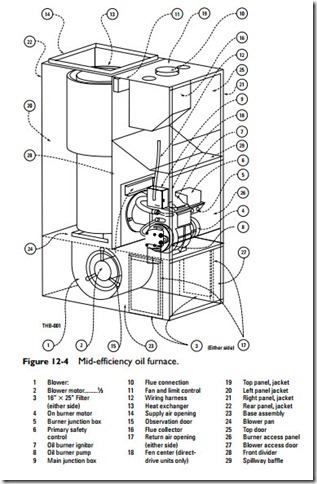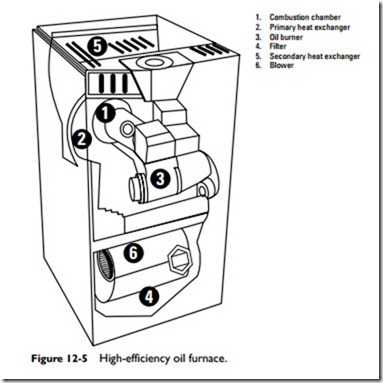High-Efficiency (Condensing) Oil Furnace
A high-efficiency oil furnace (sometimes called a condensing oil furnace) is equipped with two heat exchangers to extract heat from the combustion gases before they leave the furnace (Figure 12-5). The second heat exchanger, which is commonly made of stainless steel, is used to recover the latent heat in the water vapor produced by combustion. This is accomplished by reducing the temperature of the combustion gases. The temperature of the flue gases exiting the furnace from the second heat exchanger drops to approximately 100 to 120°F. The lowered temperature causes the water vapor trapped in the flue gas to condense in the heat exchanger and
release its latent heat. The recovered latent heat is circulated through the house, the condensate flows out of the bottom of the furnace to a nearby drain, and the cooled combustion gases are exhausted through a plastic vent pipe installed in a sidewall.
The combustion process of an oil furnace produces only about half the water vapor that a gas furnace does. This means that there is significantly less water vapor trapped in the exhaust gases of an oil furnace and, consequently, much less latent heat to recover. The smaller amount of water vapor produced in these furnaces means that the flue gas also has a lower dew point. As a result, the furnace has to work harder to recover less energy. As a result, the high- efficiency oil furnace is not much more energy efficient than the mid- efficiency oil furnace, in contrast to the situation with gas furnaces.

